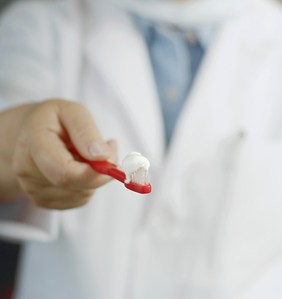 That title got your attention, didn’t it? If you were asked about the most dangerous item in your home, you might talk about knives, lighters, stove, or cleaning chemicals. What you don’t know is that one of the most dangerous items in your home is one you readily put into your mouth twice a day. If you’re wondering how your toothpaste can possibly be more dangerous than some other items in your home, keep reading.
That title got your attention, didn’t it? If you were asked about the most dangerous item in your home, you might talk about knives, lighters, stove, or cleaning chemicals. What you don’t know is that one of the most dangerous items in your home is one you readily put into your mouth twice a day. If you’re wondering how your toothpaste can possibly be more dangerous than some other items in your home, keep reading.
If you look at the ingredients list on your commercial toothpaste, you’ll find a laundry list of chemicals. If you’re like most people, you really don’t have a clue what they do, but you assume they’re safe because they wouldn’t be in toothpaste if they weren’t, right? Look a little closer at that packaging, though, and you’ll see a warning not to swallow the toothpaste. If the laundry list of unpronounceable chemicals doesn’t alarm you, that warning should.
Some common toxic chemicals you might see on your toothpaste label include FD&C blue, or sometimes red, either way it’s made from petroleum and is a toxin. Sodium hydroxide is also a toxin. Triclosan is used as an antibacterial, but is classified as a pesticide. These antibacterial products are not just known toxins, they are also contributing to the prevalence of antibiotic resistant bacteria. If you’re asking why there are dangerous chemicals being used in toothpaste, it comes down to profit. If you’re wondering how it’s even allowed, it’s because the manufacturers actively lobby to get them allowed. After all, they’re warning you not to swallow the toothpaste, right?
Now that you know what’s in your toothpaste, you may be wondering about alternatives. While you can buy toothpaste from the health food store that are less toxic (still, be sure to read the label!), you still don’t really know what’s in them, they tend to be much more expensive than what you’re already buying, and many of them taste awful. An even better alternative is to make your own toothpaste at home. The recipe is simple, just a few basic ingredients that you probably already have around the house. Your flavor options are endless, and you can make it exactly the way you like it. What’s even better is that, for a few pennies’ worth of ingredients, you can make a large batch that will last you for weeks. Refuse to expose yourself and your family to the risks of commercial toothpaste. Make your own and give your teeth and your body the best possible care.
Read more at http://besttoothpaste.net/fluoride-free/